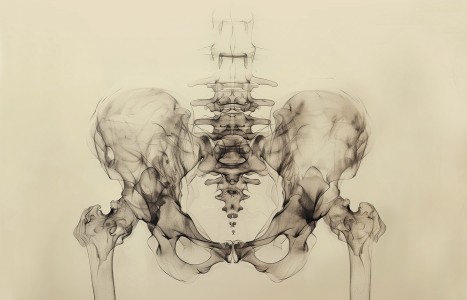People today want convenience, whether it be from their bank, credit card, favorite retail store, or restaurant. They demand it from the companies who hold their loyalty, including their health care providers (you). They don’t want to call and possibly be put on hold, and they want to use an app or schedule an appointment on your website. Here are three reasons your practice can gain by switching to online appointment scheduling.
The Tao of Gender
If you think gender is as simple as having a new client check off the "male" or "female" box on your intake form, we hope this article will expand your understanding and thus the reach of your health care.
We first published on the topic of gender in Acupuncture Today in 2003 with the first known article on transgender health for the acupuncture community, The Dance of Yin and Yang: Transgender Health, Part One. Since then, we have published three additional pieces which include Transgender Health: Part Two in 2003, Dualities: Dance of Yin and Yang in 2008 which included an interview with a transgender acupuncturist and massage therapist, and Open Doors to the LGBT Community about sexual and gender minority health in 2013. Although this current article includes some overlapping text and excerpts, we recommend each of these articles be read for a more comprehensive overview.
Sex versus Gender: Terminology
Although many people use sex and gender interchangeably, these are distinct constructs. "Sex" refers to biological and physiological characteristics (e.g., chromosomes, reproductive structures, and genitalia). "Gender" refers to the socially constructed roles, behaviors, and attributes that a given society considers appropriate for men and women. Gender identity is a person's concept of themselves as male, female, both, or neither. Gender expression is the way a person communicates their gender identity through clothing, behavior, hair, appearance.
"Cisgender" refers to people whose sex that was assigned at birth fits comfortably with their gender identity. For example, a person who was born female who also identifies as female. "Transgender" refers to people whose sex assigned at birth does not match with their gender identity. This is the "T" in the acronym "LGBT" (Lesbian, Gay, Bisexual, Transgender).
"Genderqueer" refers to people who choose to live outside expected gender norms and may or may not use hormonal or surgical treatments. Worldwide estimates suggest that 1 in every 30,000 people is a transwoman and 1 in every 100,000 people is a transman.
Asking Gender Identity
Do ask. You might wonder how asking something so personal would make a difference. The Institute of Medicine (2011) says asking sexual orientation and gender identity on intake forms helps end LGBT invisibility in healthcare. The Center of Excellence for Transgender Health at the University of California San Francisco strongly recommends the use of the following two-questions:
What is your current gender? (Check all that apply)
- Male
- Female
- TransMale/Transman
- TransFemale/Transwoman
- Genderqueer
- Additional Category (Please Specify): ______________
- Decline to State
What sex were you assigned at birth?
- Male
- Female
- Decline to State
Pronouns into Practice
Use gender inclusive language: use words like parent (in lieu of mother/father), partner (in lieu of husband/wife or boyfriend/girlfriend), child (in lieu of son/daughter) and include the use of they (in lieu of he/she), their (in lieu of his/hers), and them (in lieu of him/her).
Use of pronouns: When in doubt, ask your patient what pronoun they prefer. If you make a mistake, correct yourself, apologize and move on. Avoid things like "Back when you were a female" because as transgendered, I was never a female - I was only in a female body. Coming out as transgendered is not a realization, it's an admission. Be mindful of the subtleties."
Q&A
Interview with psychologist Andreas Neumann-Mascis PhD, owner of The Meeting Point, a collaboration of independent body workers and mental health practitioners who are resources for gender variant, gender queer and transgender youth, adults and loved ones.
AT: How can acupuncturists' provide a welcoming space for transgender clients?
ANM: For any person to feel safe in a clinical setting they have to know immediately that they are being accurately seen, clearly heard and respectfully and kindly responded to. Because of pervasive, intrusive and sometimes violent experiences with transphobia, transgender clients are acutely attentive to those seemingly small initial cues. Every person has a gender and a gender identity. All people feel safer when they see reflections of themselves in the spaces they are in. This can mean images that include gender non-conforming people, the use of a trans symbol on brochures, and avoiding images or materials that use language referring to " men's'" or "women's" bodies or experiences.
When designing systems meant to be responsive to the needs of transgender people it is invaluable to create systems that are universally applied. That means that every person who comes into the office is given the opportunity to give their preferred name and pronoun. Front desk staff have influence in determining whether any person will be able to establish a positive treatment relationship. Even if the provider is wholly informed a less than respectful and positive interaction at the front desk will set the parameters for the degree to which a client will be able to trust and engage with the quality of their care. Uniformity of systems will support the staff in not having to remember and enact "special" procedures or paperwork. Integrating that information into a larger work culture conversation models seamless acceptance and sets a standard for better care for everyone.
AT: How is working with transgender bodies different?
ANM: Transgender people have inherently complicated relationships with bodies that have not represented them well. Engaging care of the body in any way can be fraught with difficulty. It is important for transgender clients to be sincerely supported in whatever level of health care they feel able to engage in. Recommendations should always be framed as aspirations rather than requirements. Gender variant people as a population experience disproportionate levels of trauma in childhood and adulthood and as a result the physiological changes that one might expect in people with post-traumatic stress disorder may also be evident in transgender people. Because the threat itself is present and ongoing there may be a level of hyper vigilance that is adaptive and appropriate. It is vital to approach a client's relationship to self-care including patterns around food, sleep, sex and exercise from a strength-based perspective. Even less than ideal life choices may be coping strategies that work. Any suggestion around life style change should be approached with an awareness that current choices are serving a purpose.
As a provider, creating a collaborative care relationship with a transgender person means developing truly meaningful treatment for bodies that have been largely misrepresented, misunderstood and ignored by the medical community. Creating that care relationship is by definition a healing experience for transgender people and their bodies and can create a foundation for positive body engagement.
AT: What are best practices for asking body-based questions during intake?
ANM: Body parts are complicated and do not create a gender identity. Some women have a penis, some men have a vagina. If there is a reason to ask about body parts, it is important to explain clearly why you need that information and how it will impact how you think about the treatment. Before you ask any questions it is important to find out what language your client uses when referring to body parts. It is important not to assume that someone is "transitioning" from one gender to the opposite gender or that there is a discernible beginning or end to that process. More often than not the way people think about their gender and how they want to express it is much more dimensional. Never presume to know your clients' choices or wants related to medical intervention and only ask those questions that are absolutely relevant to the treatment at hand. Preface any gender intervention question you may have with an explanation of why you are asking and how it impacts the treatment. If you are unable to answer those questions for yourself it is possible that you are asking out of curiosity not care. This is natural and should not be acted upon.
It is worth remembering that having a transgender identity can be simultaneously enormously personal and relentlessly public. Ensuring that all of the information you seek from your client is founded in an investment in their well-being and nothing else is itself a healing act. Privacy and confidentiality take on a whole new meaning in working with transgender clients. Where ever you are practicing the community is VERY small and also generally very connected to one another. Be conscious of the information that you may share even in a consultation conversation. Being transgender already makes your client identifiable and for some clients that identification could put them in real danger.
AT: Acupuncturists are clinically interested in scars as they interrupt the flow of Qi. How can acupuncturists be sensitive about treatment of scars in transgender clients?
ANM: When working with a client who is scarred from gender affirmation surgery it is important to get explicit consent for engaging with that part of the body. For some, not all, transgender people the part of the body that has been surgically changed was a source of tremendous emotion and possible distress for many years pre-operatively and as a result sometimes also post-operatively. It may take some relationship building before your client is interested in engaging that level of work with you. That timeline should be guided entirely by your client. Again, if you are feeling tempted to ask questions about the surgery or your client's experience or process around the surgery ask yourself first about the relevance of that question for the treatment and explain it to your client. If you cannot explain don't ask. You have the power in this relationship. You have the power to replicate or to redress experiences your client knows well of shame, violation and objectification.
AT: Any last words of wisdom?
ANM: If you as a provider find that you are having difficulty authentically embracing these ideas or you find yourself surprised by transphobic feelings, don't ignore them and don't assume you have to avoid transgender clients. Find someone to talk to. A trainer, educator or therapist working in trans-community may be able to help you sort through your fears so that you can ultimately use your power and privilege as a health care professional to create excellent health care and a reparative experience for many transgender people.
Resources:
- Healthy People 2020 Lesbian, Gay, Bisexual, and Transgender Health http://healthypeople.gov/2020/topicsobjectives2020/overview.aspx?topicid=25
- The Tao of Gender by Tarynn Witten (Book), Humanics Publishing Group, 2002
- The Center of Excellence for Transgender Health http://transhealth.ucsf.edu/
- The World Professional Association for Transgender Health (WPATH) wpath.org
- Institute of Medicine IOM (2011). The health of lesbian, gay, bisexual, and transgender people: Building a foundation for better understanding. Washington, DC: The National Academies Press.
- http://transhealth.ucsf.edu/tcoe?page=lib-trans-count


